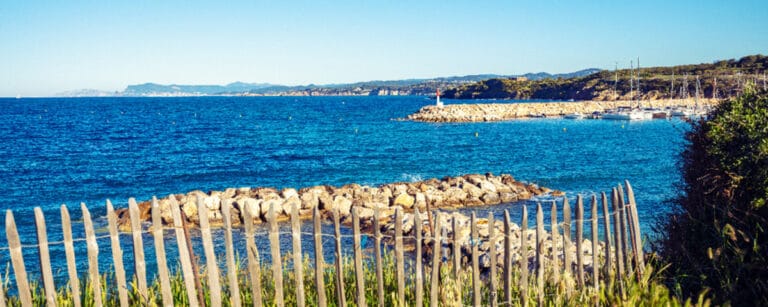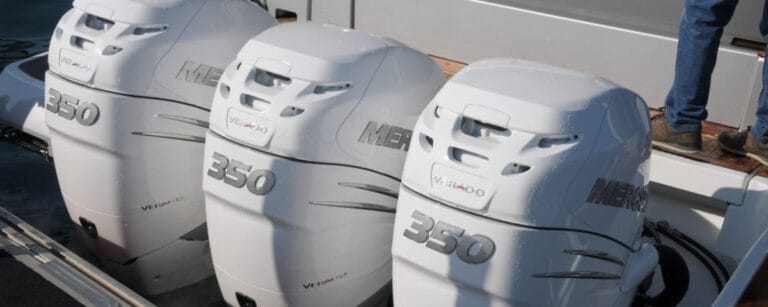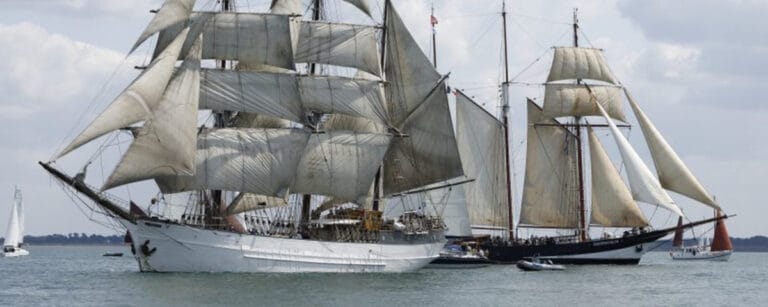At AMEL, the P.H.A.R.E. project is redefining the future of the shipyard and its sailboats.
Modernizing Without Denying Its Foundations
Behind the walls of its historic buildings in Périgny, AMEL has begun a decisive transition. The shipyard, founded in the 1960s by Henri Amel, is today one of the few to produce its large cruising sailboats entirely on a single site. This singularity gives the company a strong identity, but it required a complete overhaul of the industrial organization. This is the whole point of the P.H.A.R.E. project, launched in July 2023: Preserve the AMEL Heritage and Reinvent it Together.
“We had an aging tool, no longer adapted to the manufacturing processes of the boats of tomorrow,” explains Emmanuel Poujeade, president of the shipyard. Roofs exposed to climatic hazards, asbestos constraints to anticipate, inefficient logistics flows… so many signs that convinced the company to rethink its infrastructure. Supported by a favorable economic situation – the post-Covid period having boosted orders – the management seized the opportune moment to undertake this fundamental transformation.
A More Compact, But More Efficient Shipyard
One of the most visible aspects of this reorganization concerns the site’s surface area: 8,300 m2 previously, 7,100 m2 in the future. A reduction of nearly 15% in the footprint… for an expected increase in production. “Thanks to a new organization, we should gain 10 to 15% in capacity, or two to three more units per year,” details Emmanuel Poujeade.
The production scheme is being rethought from start to finish. Until now, an AMEL 50 began its assembly in building 1, then passed through 3, then 2, before returning to the starting point. Tomorrow, the movements will be streamlined: after molding, each hull will go directly into a pit… only to come out at the end of the process. Less handling, fewer risks, more efficiency.
In addition to these new flows, there is energy modernization. The insulation of the buildings is reinforced, the heating and equipment redesigned to limit electricity consumption. The whole is part of a long-term sobriety dynamic, in line with market expectations.
The Human Element: Pillar of the Transformation
At AMEL, the reorganization undertaken by the P.H.A.R.E. project is based first and foremost on a strong internal dynamic. Employees are involved in redefining production spaces, from carpentry workshops to upholstery. “Today’s managers are yesterday’s operators,” recalls Emmanuel Poujeade, who claims a governance rooted in field experience. Each stage of the project is discussed in the CSE, with a clear objective: to improve working conditions, in consultation with those who manufacture the boats.
This participatory approach is part of a broader cultural change. Long very closed on itself, the shipyard is now opening up to its environment: collaborations with external designers, regular hosting of trainees and apprentices, active involvement in the Fédération des Industries Nautiques and in the eco-organization APER. Without denying its identity, AMEL is evolving its model, combining artisanal excellence and collective responsibility.
Fidelity to a Vertical Integration Model
In a sector where subcontracting abroad is commonplace, AMEL maintains a rare operation: almost everything is done on site. Hulls, carpentry, plumbing, electricity, fittings, upholstery… control remains internal. This model guarantees traceability, consistent quality, but also a customization capacity highly appreciated by customers.
This fidelity to vertical integration is also a way to perpetuate know-how and transmit a sense of detail specific to the house culture. The P.H.A.R.E. project does not challenge this foundation. It optimizes it.
A Lucid and Committed Environmental Approach
AMEL adopts a measured stance on the environmental issue. No announcements, but in-depth reflection. The shipyard is working on the energy autonomy of the units, the limitation of resources on board, and is interested in the use of bio-sourced or recycled materials, “within the limits of what a shipyard of our size can do,” emphasizes Emmanuel Poujeade.
The priority today is given to the structuring of a solid CSR policy, which concerns both buildings, local supply chains and involvement in collective approaches. Notably the one, underway within the FIN, which aims to develop a grid for analyzing the complete life cycle of boats: design, manufacture, use, deconstruction. AMEL is fully involved, convinced that the transition also involves cooperation at the industry level.
A Stable Range, a Clear Course
AMEL does not offer a new model for 2025, but continues its course with constancy. The AMEL 50 and 60, launched respectively in 2017 and 2019 and designed by the Berret-Racoupeau firm, remain today the pillars of a tight, but still attractive offer. The order book is full until 2026, proof that the differentiation strategy pays off.
For Emmanuel Poujeade, the success of AMEL sailboats lies in their singularity: “We have not deviated from Henri Amel’s vision.” A vision centered on travel, safety, comfort on board. A discreet philosophy, but one that still appeals to those who are looking for much more than a simple sailboat: a true companion for life.
With the P.H.A.R.E. project, AMEL proves that it is possible to evolve without denying oneself. Faithful to its history, the shipyard builds the future with method, rigor and coherence. In a nautical world undergoing profound change, this constancy becomes a landmark.
Enjoyed this post by Thibault Helle? Subscribe for more insights and updates straight from the source.







